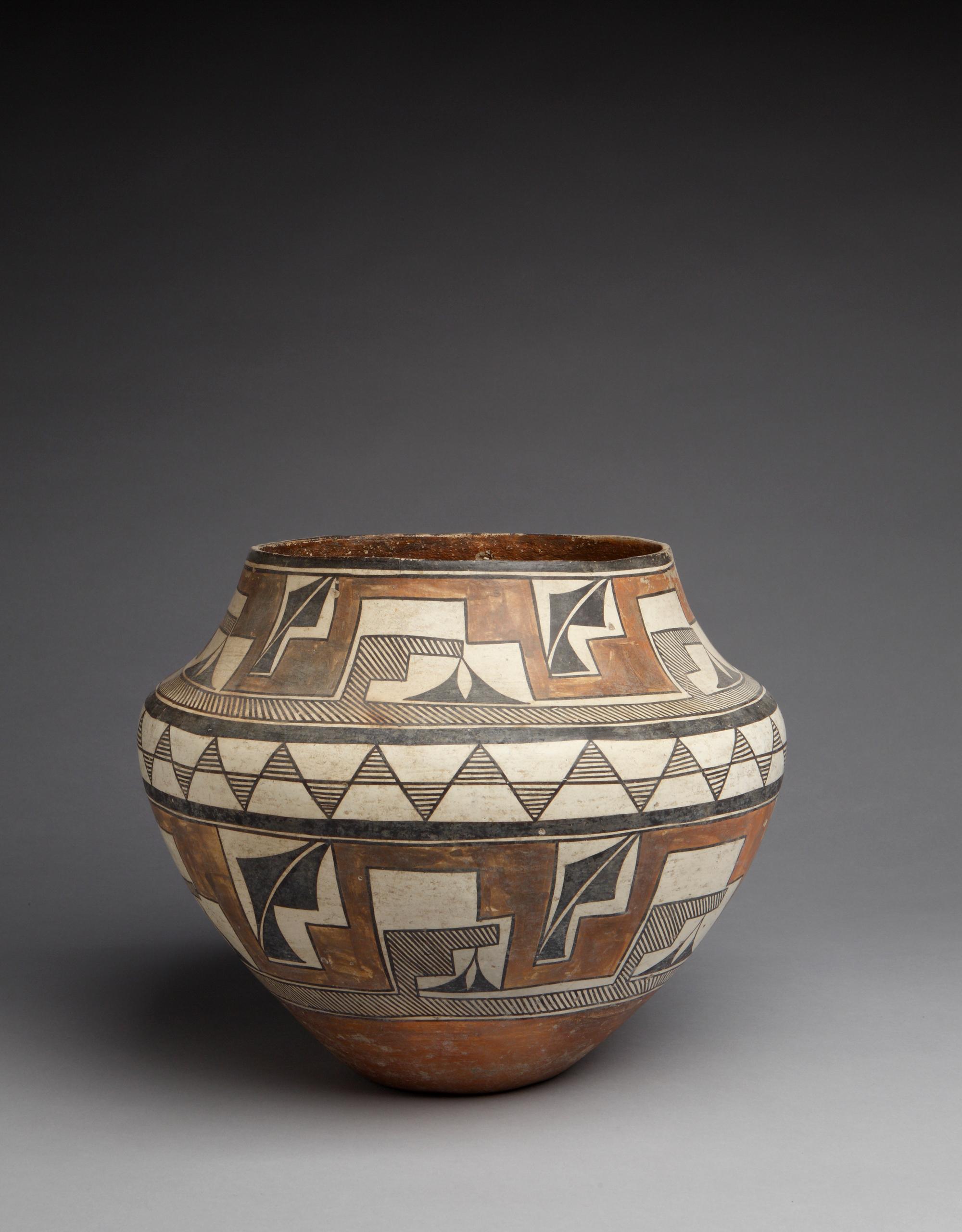
Photograph by Addison Doty. Copyright 2014 School for Advanced Research.
Water jar
Date: 1910-1920
Artist or Maker: Unknown
Dimensions:
Dimensions: 24.2 × 30.5 cm (9 1/2 × 12 in.)
Weight: 1.5 kg (3.25 lb.)
Medium: clay | paints
Credit Line: Indian Arts Fund purchase for the permanent collection, 1924.
Place Made:
Valencia County, New Mexico, Southwest, United States, North America
Object Number: IAF.331
Not on view
Tribal Collection Review RemarksAccording to the participants in the Acoma collection review visit June 3-5, 2015 (Events Record “Collection Review: Acoma Pueblo, Review 2”): The temper used in this pot is river sand (called gravel by the participants), not potsherds. Dolores Lewis Garcia mentioned that very fine granules from sandstone are sometimes used as temper. You can feel the fingerprints of the artist's hands on the interior of the rim which naturally happens when the artist is creating the piece. Robert Patricio explained that designs are usually an interpretation of what the artist saw in their environment.
During the last review (Review 1), it was noted that several jars had panels of designs in odd numbers. This seemed unusual as it was believed that most designs were typically even-numbered. The participants stated that each artist will make their own decision regarding the number of designs/panels they want around the jar. The size of the jar and the complexity/size of the design usually determine the outcome of the overall design/panels; however, it is the personal preference of the artist.
The participants mentioned the processing of the clay is different from what it used to be historically. Historically, the clay would have been gathered, soaked, then used. Now, the clay is gathered, soaked, dried, and ground before it is used to help purify it. The addition of potsherds as temper is part of both processes. The process has changed as a result of old mines closing and new ones opening. Clay form the newer source is not as pure as clay from older mines. The different clays and the types of water used (spring or tap water) can affect the texture and elasticity of the clay.
According to the participants in the Acoma collection review visit February 26-27, 2019 (Events Record “Collection Review: Acoma Pueblo Review 12”): The shape of a water jar is characterized by usually having a concave base (can also have a flat base) leading to a wider body and shoulder area. The shoulder, which is typically rounded but can also be sharp, leads inward and up to the neck and opening of the water jar. Historic water jars will sometimes have an indentation from the base the pot was built on (also known as a puki).
Water jars of all sizes are made and used. Medium to small size water jars are more commonly used to carry water as the weight of a filled water jar can become quite heavy. Large sized water jars would be used for storing water. Today at Acoma, water jars are still being used and made in both traditional natural and commercial materials.
In Collection(s)
Bibliography:
The Indian Arts Research Center, in collaboration with Native American community scholars, strives to present accurate collections records. Records may be updated as new information becomes available and is reviewed with the Native American community having cultural affinity to particular items. Please write to iarc@sarsf.org if you have questions or concerns related to the documentation.
